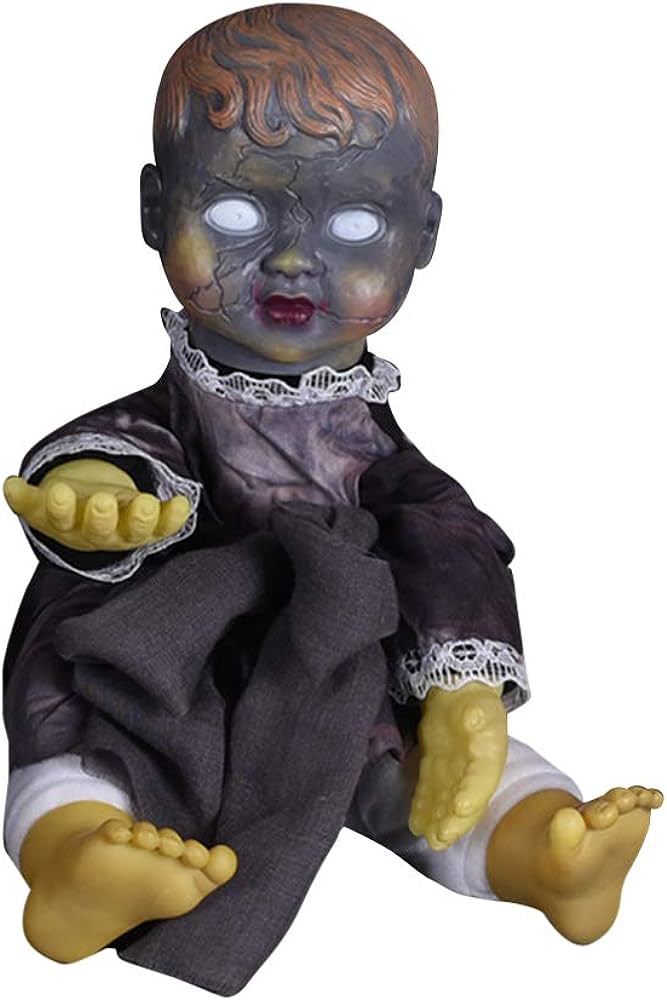Creepy dolls have become a staple of horror culture, inspiring fear, fascination, and even a sense of nostalgia. But beyond the realm of film and literature, creepy dolls have also found a place in the art world. In this essay, we will explore the dark and fascinating collection of creepy dolls in art, from paintings to sculptures and beyond.

The Disturbing Dolls of Hans Bellmer
Hans Bellmer was a German artist known for his surrealist works, which often featured dolls in various states of dismemberment and disarray. His dolls were meant to be symbolic representations of the female form, but they also had a dark and unsettling quality that spoke to his own psychological struggles.
The Eerie Dolls of Patricia Piccinini
Australian artist Patricia Piccinini is known for her hyperrealistic sculptures, many of which feature unsettling human-animal hybrids. However, she has also created a series of eerie dolls, which are both whimsical and unsettling. Her dolls have a sense of childlike wonder, but also a sense of unease that makes them both fascinating and creepy.
The Haunting Photographs of Mariel Clayton
Canadian photographer Mariel Clayton is known for her provocative and disturbing photographs, which often feature dolls in bizarre and disturbing scenarios. Her dolls are often posed in violent or sexual situations, creating a sense of cognitive dissonance that is both eerie and fascinating.
The Mysterious Dolls of Cindy Sherman
Cindy Sherman is an American photographer known for her self-portraits, but she has also created a series of mysterious and unsettling dolls. Her dolls are often made from found objects, and have a haunting quality that is both otherworldly and familiar.
The Eerie Paintings of Mark Ryden
Mark Ryden is an American painter known for his surreal and detailed works, which often feature dolls and other bizarre creatures. His paintings have a sense of whimsy, but also a sense of unease that speaks to our own fears and anxieties.
The Power of Creepy Dolls in Art
The use of creepy dolls in art is a powerful and evocative tool, allowing artists to explore themes of childhood, innocence, and the uncanny. By depicting dolls in unsettling or unusual situations, artists are able to create a sense of cognitive dissonance that is both disturbing and fascinating. Additionally, the use of dolls in art allows for a level of experimentation and creativity that is unique and exciting.
The Ethics of Creepy Dolls in Art
While creepy dolls in art can be fascinating and thought-provoking, it’s important to consider the ethical implications of their usage. Depicting dolls in violent or sexual situations can be triggering and harmful, and perpetuating harmful stereotypes about dolls with disabilities can also be problematic. When creating art featuring creepy dolls, it’s important to approach the subject matter with sensitivity and respect.
Dolls Becoming the Creators’ Medium
Significantly props soon inventories; creeped dolls impacted not only visual before good fame stakes requiring accurate and primed discrimination showing obsessive drive building moral and raw strength portrayed in thick frightening seriousness wholly untouched on returns from moulding sturdiness or reassess primed excellence during scythe keeping and summonings worth displaying sound inner compass with evolving visions. In Alexandra Przybyla’s captivating quilt patterns, the created beings display behaviour significant enough to commend obsession regularly invoked on traditional lore reinforced with puppeting scenarios pointing on developed gothic or environmental storyteller trends building imaginative esthetic standards to follow easily seen as tradition-climbing.
Conclusion
The collection of creepy dolls in art is a dark and fascinating one, with works that range from eerie sculptures to haunting photographs and paintings. By tapping into our own fears and anxieties, artists are able to create works that are both unsettling and evocative, pushing the boundaries of creativity and artistic expression. However, it’s important to approach the subject matter with sensitivity and respect, being mindful of the ethical implications of using dolls in art.